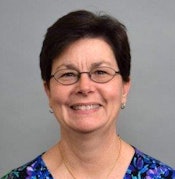
Are breast density notification letters understandable to the women who receive them? Not so much, according to a study published April 26 in the Journal of the American Medical Association. Researchers found that the readability and understandability of these letters did not match average state literacy levels.
"There was a mismatch between states' adult literacy levels and the literacy level of the material," lead author Nancy Kressin, PhD, of the Veterans Affairs Boston Healthcare System, told AuntMinnie.com. "And this suggests that these letters aren't meeting the intended goal of helping women make informed decisions about their health."
Discovering disconnect
Dense breast tissue can hide cancer on mammography, creating a masking bias, and density is also considered an independent cancer risk factor. That's why more than half of U.S. states have passed legislation to inform women about their tissue density and suggest that they discuss with their doctors whether additional screening would be beneficial.
 Nancy Kressin, PhD, from the Veterans Affairs Boston Healthcare System.
Nancy Kressin, PhD, from the Veterans Affairs Boston Healthcare System.But do women understand what's in the letters? To find out, Kressin and colleagues reviewed the laws requiring breast density notifications for 24 states with legislation as of January 1, 2016. They excluded Delaware because the language of that state's bill was not detailed enough to analyze its content (most states specify exact language for the notification letters) (JAMA, April 26, 2016, Vol. 315:16, pp. 1786-1788).
The group compared the content, readability, and understandability of these letters across states, measuring readability using two tests: the Flesch-Kincaid reading grade level and Dale-Chall readability grade score. Understandability was assessed using a tool called the Patient Education Materials Assessment.
Finally, Kressin and colleagues used state statistics to identify the proportion of adults lacking basic prose literacy skills.
For the 23 states included in the study, the researchers determined the following:
- All breast density notification letters mentioned masking bias.
- 74% mentioned the association between tissue density and increased cancer risk.
- 83% mentioned supplemental screening as an option and advised women to consult their physician. Of these, 40% informed women that they might benefit from such screening, and 27% mentioned specific modalities.
Yet the mismatch between state literacy levels and the readability and understandability scores of the letters was disheartening, according to Kressin and colleagues. Literacy studies suggest that 20% of the U.S. population reads below a fifth-grade level, but readability scores of these density notifications ranged from grades seven to college level, with most exceeding the recommended reading level of grades seven to eight.
In fact, the researchers found that some of the highest readability levels for density notifications were in states with the lowest literacy levels. For example, in Texas almost 20% of adults lack basic literacy skills, but the readability level of the breast density notification letters for this state ranged from eighth grade to college level.
As for understandability, all of the breast density notification letters included in the study scored poorly, from 11% to 33%, according to Kressin and colleagues.
This disconnect "may create uncertainty for women attempting to make personalized decisions about supplemental screening and may exacerbate disparities in breast cancer screening related to low health literacy," the group wrote.
The study results show that there's more work to be done to make these letters more effective, Kressin said.
"Our results suggest a real need on the part of legislators and patient advocates to make sure the text in these notifications is comprehensible to women," she said.
Tip of the iceberg?
If density notification letters are hard to understand, that's because they're part of a broken system, according to Nancy Cappello, PhD. A cancer survivor whose own cancer was missed after years of normal mammograms, Cappello was instrumental in getting the first state density notification law passed, in Connecticut in 2009.
Kressin and colleagues are isolating a small aspect of a much bigger problem: ineffective communication between patients and their doctors.
"It's time for medical trade organizations to revisit the readability and understandability of all medical reports," she told AuntMinnie.com. "What's needed is regular, culturally appropriate patient-physician discourse conducted in lay language. That's what will help patients make informed decisions and mitigate disparities in care. And this kind of conversation needs to happen regardless of whether a patient lives in a state with a breast density notification law."



















